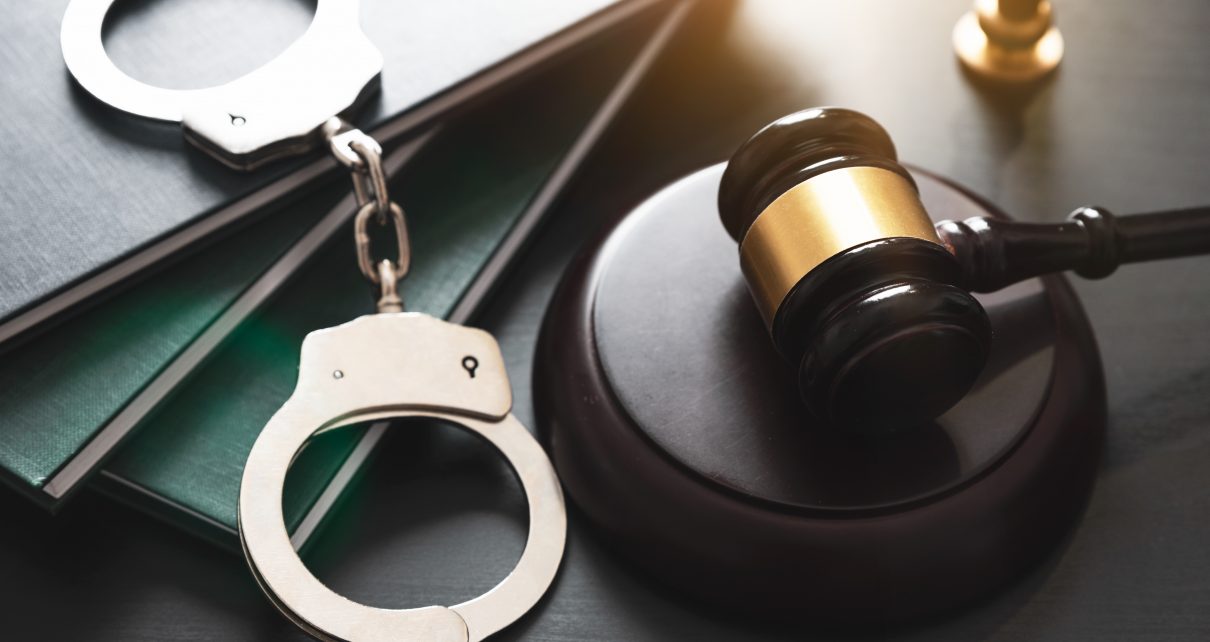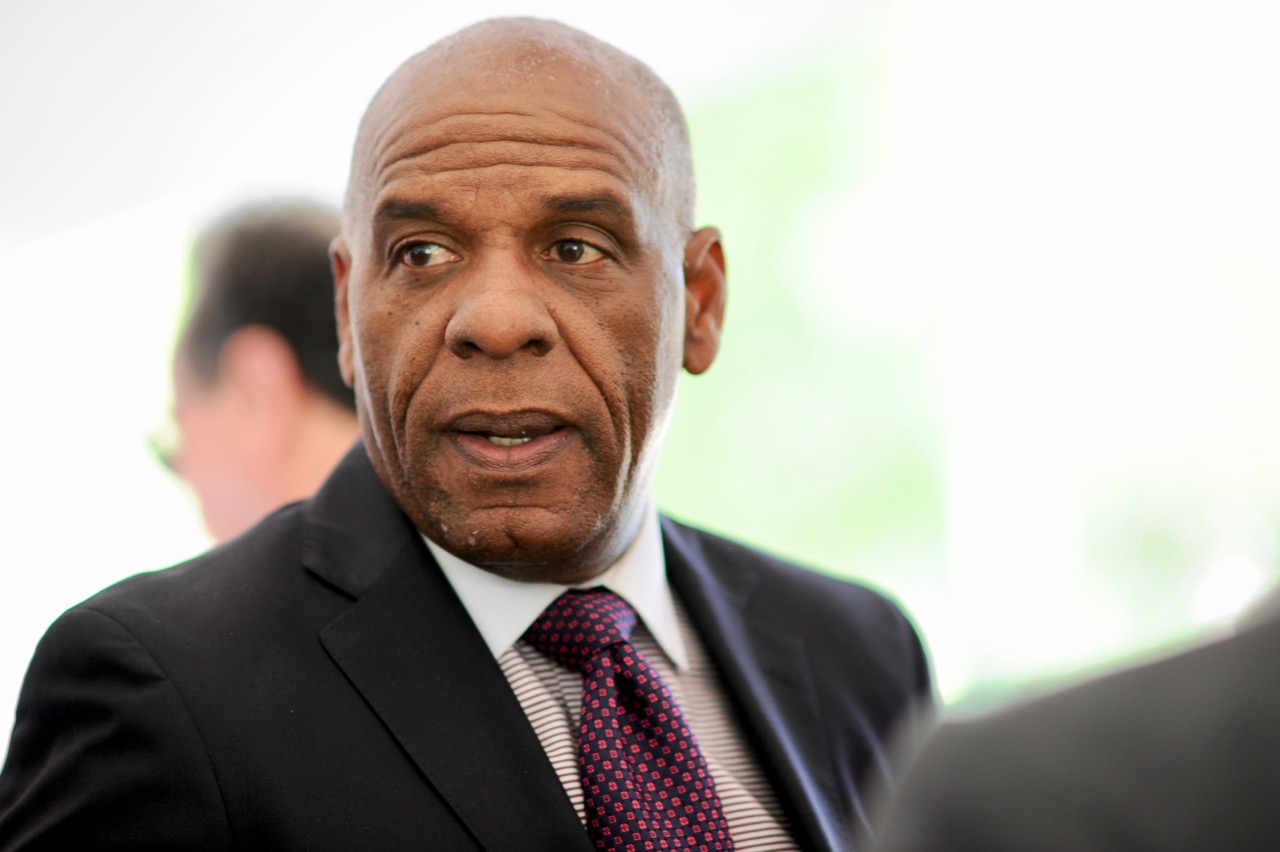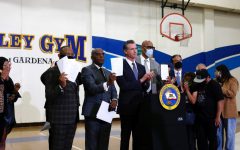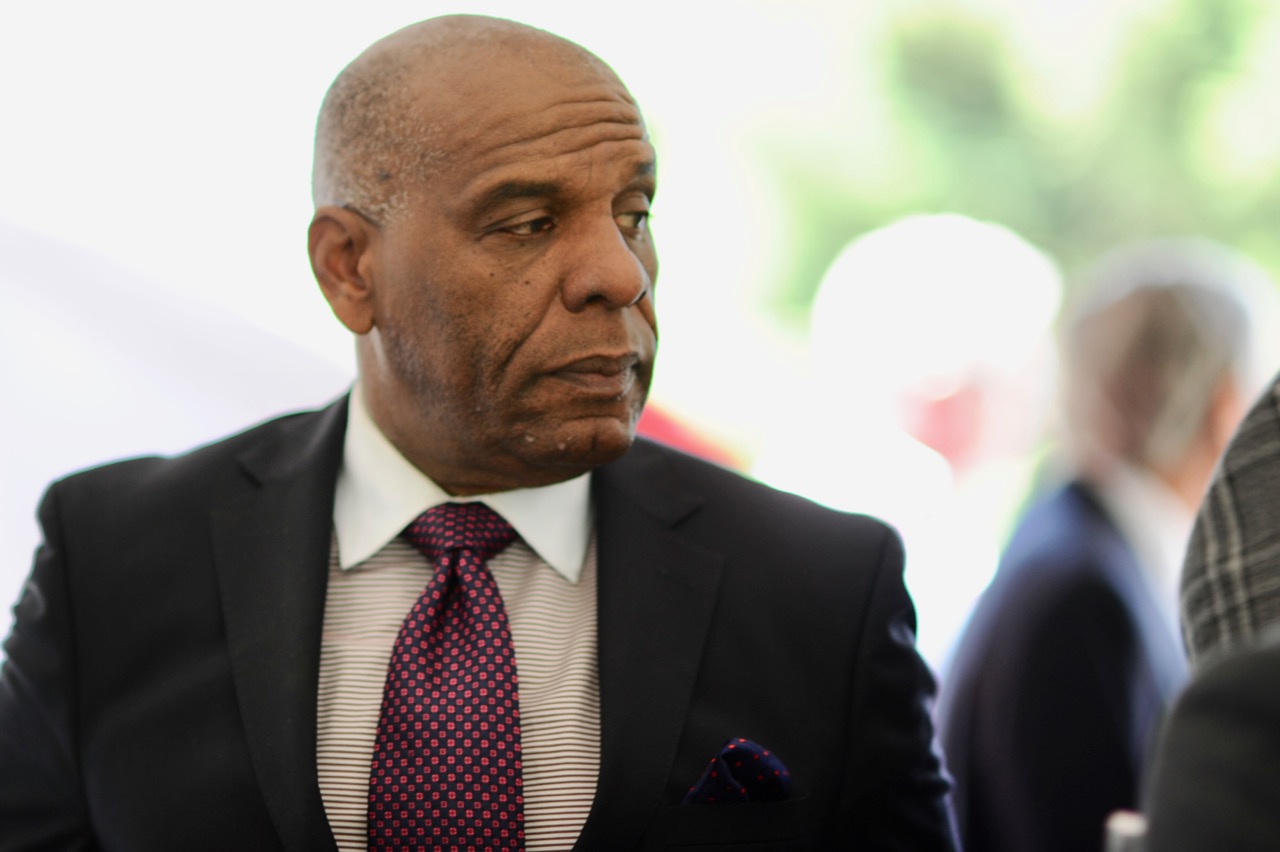
Handcuffs and Wooden Gavel.(Photo: Proxima Studio/Shuttertock)
Preventing Police Misconduct Requires Practical Actions, Not Ideological Reforms
Calls for systemic reforms rooted in a racialized prognosis of the incident will only further jeopardize law and order
By Wenyuan Wu, February 9, 2023 2:22 pm
By Wenyuan Wu and Paul Cappitelli
The horrific death of 29-year-old Tyre Nichols in Memphis has ignited yet another media firestorm and public outcry for systemic change in policing. News outlets and social media platforms couldn’t wait to associate the tragedy with white supremacy, internalized racism, and systemic failures in law enforcement. As in the cases of other high-profile police misconduct in recent years, zealous pundits rush to demand comprehensive reforms of our criminal justice system along the lines of resistance, racial justice, diversity, equity, and inclusion (DEI).
The public outrage is understandable given the saturated media coverage; so is the urge to do something about police misconduct. However, calls for systemic reforms rooted in a racialized prognosis of the incident will only further jeopardize law and order by eroding public trust in law enforcement. If we are serious about stopping preventable tragedies involving the use of deadly force by police in the future, we must first reject the highly-politicized hyperbole that masquerades as truth and move beyond a generic passion for change.
Debunking the “Anti-Police” False Narrative
The popular and widely spread assertion that police officers of all colors have internalized a racist agenda to hunt and kill unarmed civilians, and that this predisposition presents an ‘ongoing existential threat’ to racial minorities, is a dangerous myth. Police misconduct, being a serious issue within the profession in itself, is hardly the most consequential factor in explaining violence against American citizens, particularly persons of color.
For instance, research by the National Law Enforcement Officers Memorial Fund (NLEOMF) and noted police researcher/author Heather Mac Donald reveals a striking statistic in 2015: the historical per capita rate of police officers being murdered in the line of duty was 45 times higher than the rate of unarmed black males killed by law enforcement. That was after controlling for, and including, Hispanic-named victims in the “unarmed black” category published by the Washington Post. The research was reiterated in 2021 with a similar finding: “a police officer is 18½ times more likely to be killed by a black male than an unarmed black male is to be killed by a police officer.”
In 2022, Mapping Police Violence, an activist nonprofit advocating for “transformative change,” logged 129 deaths of “unarmed” civilians by police, of which 35 were Black. In the same year, the Officer Down Memorial Page (ODMP), another non-profit dedicated to honoring fallen officers, counted 230 line of duty deaths. Among them, 64 were shot and killed. The term “unarmed,” as utilized for purposes of these statistical calculations, does NOT imply that these people were not posing a threat to citizens and/or police officers. The facts and circumstances surrounding each individual death must be carefully examined before making a final judgment on why force was used and whether the use of force was warranted.
The “killer cops” narrative can also be quickly debunked when cross-examined with official government-related data sets. Once again, criminal violence is a decisively greater threat to minority communities than police misconduct. According to the FBI Crime Data Explorer, there were 13,537 homicides in 2021, of which 4,905 (33%), 7,975 (53%), and 1,463 (12%) were committed by Whites, Blacks, and Hispanics respectively. Among the victims, 5,498 (37%) were White, 8,543 (58%) were Black and 1,704 (14%) were Hispanic.
These numbers dwarf those reported by Mapping Police Violence which include 1,147 deaths by police. Of the 1,147 deaths, 138 were unarmed, including 49 Whites, 44 Blacks and 30 Hispanics. Any serious discussion on matters of life or death concerning a group painted with a broad brush as harmless and helpless victims must engage with all relevant data. It is no wonder that police engagements with people of color are higher since a disproportionate level of criminal activity involves minorities. The greater the percentage of police-citizen interactions, the higher the likelihood of force being used to affect arrests is. Perspective matters.
Criminal Violence: A Bigger Issue Than Police Misconduct
In the grand scheme of things, within-group criminal incidents, oftentimes related to gang activities, drug trafficking and other criminal pursuits, are by far the single most salient threat to safety in inner city communities. But this posit does not fit the prevailing media and activists’ narrative which suggests that the police themselves bear all of the responsibility for the ills of the populous and the death of minorities. The data simply does NOT support this assertion.
According to the FBI’s official Crime Data Explorer database, violent crimes have been on the rise over the last three years across all races and ethnicities. African Americans have been particularly vulnerable to this latest crime wave. Between 2018 and 2021, violent incidents targeting Black victims increased by 117.7% (from 143,684 to 312,822), compared with 75% (from 262,448 to 459,457) for White victims. In 2021, violent crimes against Blacks accounted for 38% of all such crimes. This upward trend mirrors the increases in violent crime offenders. From 2018 to 2021, violent crimes committed by Blacks grew by 77.6% (from 188,903 to 335,507). While Blacks are 13.6% of the general population, the percentage of Black violent crime offenders was at 44% in 2021. This explains why proactive law enforcement activities tend to concentrate in minority communities in efforts to suppress crime and enhance safety.
The rates of violent incidents victims and offenders per 100,000 people, desegregated by race and ethnicity, are even more striking.
This is by no means an excuse for inappropriate use of force by the police, particularly those extremely rare occasions resulting in deaths. But the big picture is crucial in demonstrating an urgent need for strengthening law enforcement, especially in urban minority neighborhoods where rampant crimes have disrupted everyday living of law-abiding citizens.
Upholding Standards in Support of Law Enforcement
Police reforms, designed in an ideological fashion to pursue structural changes in the names of equity and restorative justice, will not alleviate police misconduct. Nor can they fight rising crime rates. On the contrary, misguided attempts to reform law enforcement have backfired by accentuating the false narrative attacking the police and by bringing down standards.
The crusade against law enforcement has done a huge disservice by degrading the dignity of the profession. Rather than sharing the generational pride of serving and protecting, young people born into families of police officers nowadays do not want to join the profession in large part because of steady declines in public trust. A 2022 Pew Research Center survey showed that America public’s confidence in police officers decreased by over 10 percentage points between 2018 and 2021. Another opinion research project by Gallup focused on a 27-year time period and found that public trust in the police delved to a record low in 2020 when the percentage fell five points to 48%.
As a result, police departments across the nation, including the Memphis Police Department, have been experiencing critical staffing shortages. Last year, the nonprofit Police Executive Research Forum (PERF) found a total decrease of 3.48% in officer staffing levels between 2020 and 2021 and a 3.9% decrease in officer hirings from 2019 to 2021. Resignations grew significantly by 40.4% from 2020 to 2021. Although the statistics for 2022 have yet to be released, widely circulated reports from departments across the country indicate that these staffing shortages are exponentially higher now and will be into the foreseeable future.
New York, for example, has a shortage of over 3,700 officers with little ability to replenish the ranks and keep up with attrition (the normal ongoing evolution of retirements/separations). According to the New York Police Benevolent Association, NYPD would need at least 1,200 new recruits to fill budgeted positions, and an additional 2,500 recruits to maintain 2019 staffing levels. Instead, the department was only able to acquire 543 recruits. To make matters worse, not all of those 543 recruits will pass the rigorous training regimen and ultimately be deployed, which exacerbates the current shortage.
In a vicious cycle, many law enforcement agencies have responded to the staffing issues by lowering recruitment and training standards. In Chicago, the city police department caved to demands for justice reforms and eliminated requirements for job applicants. New Orleans opened up 50 to 70 “civilian detective” positions and lowered standards for uniformed officers to allow previously disqualified applicants to re-apply.
Memphis is no exception. The Memphis Police Department (MPD) lowered the required college credits from 54 to 24 and eliminated its timed physical ability test. At least two of the five former officers involved in the death of Tyre Nichols were employed after the hiring standards were significantly relaxed. Questions are also being raised about the backgrounds and previous employment history of Memphis PD officer hired under the push for more officers to bolster the ranks.
The ideology-driven diversity push has further compounded the problem. For years, the MPD has ramped up its diverse hiring activities by arguing for matching the police force to the city’s racial makeup. The now disbanded SCORPION (Street Crimes Operation to Restore Peace in Our Neighborhoods) unit where the five former officers were assigned was put together in 2021 to combat rising violence with a flimsy training program consisting of three days of PowerPoint presentations, one day of suspect apprehension training and one day of firearms training.
Activists are also calling for a nationwide ban on special enforcement units similar to Memphis’ now-disbanded SCORPION unit. These units serve a valuable purpose in keeping communities safe when properly supervised and monitored for misconduct. Eliminating these units is a knee-jerk reaction that will not address the underlying cause of police misconduct. Criminals welcome the disbanding of these units.
Dr. Jonathan Wender, an internationally renowned expert on police reform and the use of force, argues that “policy changes and politically driven ‘training’” lead to lowered standards and the hiring of candidates who have not been properly vetted. Poorly trained and supervised law enforcement officers not following protocols in restraining suspects and even going rogue are an inevitable recipe for disaster. The solution is not to punish the entire profession by withholding respect or resources, but to uphold rigorous standards for ethics, professionalism and competence.
Rebuilding Public Trust
Any sensible action to curb police misconduct and improve safety for all must tackle the declining public trust in police and civilian-police interactions. Too often, the slogan “Hands up, don’t shoot” (an inaccurate and debunked trope) is invoked as a dramatic reaction to “police brutality.” This is nothing but over-the-top theatrics engineered to provoke public panic, perpetuate the victimhood narrative, and coach passive-aggressive non-compliance with police investigations. High profile cases of Michael Brown, Eric Garner and Tyre Nichols, for instance, didn’t involve any guns. All three, however, did involve varied levels of resistance against the police during an arrest situation.
One common, yet politically inconvenient denominator of all tragic deaths of civilians by police officers is the civilians’ failure to comply with lawful commands by the officers. In the vast majority of these cases, the victims were also under some sort of influence of illicit drugs and/or alcohol. Mind-altering substances can severely impair a person’s judgment, which can aid in turning an otherwise routine interaction with law enforcement into a deadly encounter.
The socially responsible thing to teach our youth is not that they must protest “killer cops,” but that they must learn to obey the law and cooperate with the police. Additionally, youth should be taught to refrain from engaging in unlawful and potentially harmful activities involving the excess use of alcohol and drugs. Fleeing, fighting and resisting law enforcement is a common thread in almost every single instance where deadly force was employed.
Bad police officers who threaten the general public of all colors and backgrounds, need to be purged from the profession without question. On the other hand, good officers, who comprise the vast majority of the policing profession, don’t need to be “reformed.” They deserve the respect and support from all law-abiding, good-faith citizens, especially at a time when their services are desperately needed to curb the surge of violent crimes and murders throughout the country. Police officers are life savers, not life takers.

Paul Cappitelli is a career law enforcement professional with over 45 years of experience. He served with the San Bernardino County Sheriff’s Department (SBSD) for 29 years, retiring at the rank of Captain in 2007. Paul is a public safety consultant on police and corrections practices matters. He is an expert witness in civil litigation representing the interests of both defense and plaintiffs. He regularly opines on law enforcement-related matters for radio, television and print media. He holds a Master’s Degree (MPA) in Public Administration/Public Policy, a BS in Business Management and an AA in Administration of Justice. Paul’s website: https://www.paulcapp.com
- Legal Advocacy Stops a Racially Exclusionary Scholarship at UC San Diego - October 30, 2025
- Gavin Newsom Supporter Tells Chinese American Activists to ‘Go Back to China’ - October 24, 2025
- Fighting White Supremacy Once Again, Ku Klux Klan Act is Challenging Race-based Scholarship at UCSD - August 4, 2025





Nearly two-thirds of Americans support local law enforcement and they oppose calls for defunding police departments. Some think that the attack on local law enforcement is an attempt by the deep-state Democrat and globalist cabal to install a national/global police force instead?
I could tell before I finished reading the article that the authors were law enforcement or academia-related people and turns out to be both. Bottom line is people don’t give a damn about stats like these when it comes to police misconduct because we/they don’t see the the arguments you make in real life. What is seen is cops doing bad things to minorities and seeing is believing so until the general public can actually see some of the statistics used in this article, and they won’t because they aren’t tangible, you’re points won’t be well received by the masses no matter how valid the numbers may be. The last sentence of this article would be and could be validly disputed in numerous neighborhoods around SoCal. “Police officers are life savers, not life takers.”